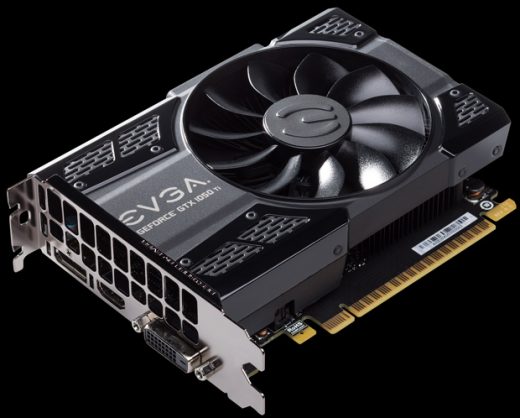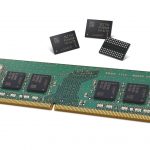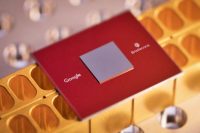NVidia GTX 1050 vs. GTX 1050 Ti – What’s the Difference and Which Is Worth Your Money
NVidia GTX 1050 vs. GTX 1050 Ti – What’s the Difference and Which Is Worth Your Money
NVidia recently published two graphic cards targeted at e-sports players, able to deliver 60 fps at 1080p resolution in most modern games. The two cards are direct competitors to AMD Radeon RX 460, another graphic card targeted at e-sports gamers. Let’s see how the two compare and which one is a better bang for your buck.
Hardware Specs

NVidia GTX 1050 is basically a GTX 1050 Ti with 2 GB of vRAM, and with some specs shaved down. Both cards are based on NVidia’s Pascal architecture, built in 14 nm production process. The GTX 1050 sports 640 CUDA Cores, while the GTX 1050 Ti sports 768 CUDA Cores. As is the case with CUDA Cores, NVidia GTX 1050 features 40 texture units (the GTX 1050 Ti features 48 texture units). Both cards are equipped with 32 ROP units, and 2 graphic processing clusters, with GTX 1050 Ti having one streaming multiprocessor more than the GTX 1050 (6 vs. 5).
As we already stated, NVidia GTX 1050 has just 2 GB of video memory, while the GTX 1050 Ti has a solid 4 GB of video memory. On the other hand, the GTX 1050 features higher base (1354 MHz) and boost (1455 MHz) clocks; NVidia GTX 150 Ti sports 1290 MHz base, and 1392 MHz boost clock. Memory clock is the same on both cards (3504 MHz), as well as memory data rate (7 Gbps). Both cards feature the same, 128-bit memory interface along with 112 GB/s memory bandwidth.
Connectors, TDP, Pricing
Both cards have one DisplayPort, One HDMI, and one Dual-link DVI port. TDP is 75 watts, meaning that both the GTX 1050 and GTX 1050 Ti can work without additional power connectors. The GTX 1050 can reach 62 degrees Celsius under load; The GTX 1050 Ti runs at around 57 degrees Celsius under load. These numbers are quite low, making the two cards excellent choices for gamers who like to OC every component.
Pricing is similar; NVidia GTX 1050 is priced at £115/€125/$109, while the GTX 1050 Ti sports the price of £139/€155/$139. For comparison, AMD Radeon RX 460 has a price of $99 for the 4 GB version.

Benchmarks
Based on several reviews, the GTX 1050 can run The Division (ultra settings, 1080p) at around 30 fps. The GTX 1050 Ti can go up to 35 fps. At high settings, The Division runs at 51fps (GTX 1050), and 58fps (GTX 1050 Ti). The GTX 750 Ti, one of the best-selling cards from NVidia can run The Division at around 38fps (high settings, 1080p), and 22fps (ultra, 1080p). The RX 460 can run The Division at 50fps on high and 29fps on ultra settings.
Rise of the Tomb Rader runs at 50fps (1080p, high settings), and 40fps (very high, 1080p) on the GTX 1050. GTX 1050 Ti can run the game at around 56fps (high, 1080p) and 51fps at very high settings. The GTX 750 Ti can run the game at 29fps (very high, 1080p). The RX 460 can go up to 40fps (high) and 35 fps at very high settings.
As for the Gears of War 4, NVidia GTX 1050 goes up to 45fps on high settings (1080p), and 35fps on ultra settings. The GTX 1050 Ti can run the game at 65fps at high settings and 47 fps at ultra settings (1080p). AMD Radeon RX 460 can run Gears of War 4 at 46fps on high and 35fps on ultra settings.
Ashes of the Singularity, one of the most demanding games at the moment, runs at 32fps on the GTX 1050 (high, DX 12, 1080p), while GTX 1050 Ti can push the game up to 36fps (high, DX 12, 1080p). AMD Radeon RX 460 runs the game at 26fps at the same settings.
For the end, Far Cry Primal benchmarks. The GTX 1050 can push the game up to 50fps on high, and 37fps at ultra settings (1080p). The GTX 1050 Ti goes up to 55fps on high, and 40fps on ultra (1080p). as for the RX 460, the card can run the game at 42fps on high and 29fps on ultra settings.
As you can see, most modern games can run at highest settings in 1080p resolution and still be playable. For the best experience (60 fps) it is recommended to lower some demanding graphics settings. For a card(s) going for less than $150 these results are great.
Conclusion
When picking one of the two GTX 1050 cards, the price is the most important aspect. Since the GTX 1050’s recommended price is $109, just $30 lower than the recommended pricing of the GTX 1050 Ti ($139) we recommend all gamers to save $30 more and go for the GTX 1050 Ti. Although at the moment, the performance difference is between 10%-30%, the GTX 1050 Ti packs 4 GB of vRAM, which will be crucial in running upcoming games that will ask more and more video memory. If you plan on playing all upcoming games, go for the GTX 1050 Ti; it’s a bit more expensive, but additional 2 GB of video memory definitely justifies the price difference.
The post NVidia GTX 1050 vs. GTX 1050 Ti – What’s the Difference and Which Is Worth Your Money appeared first on MobiPicker.
(112)














